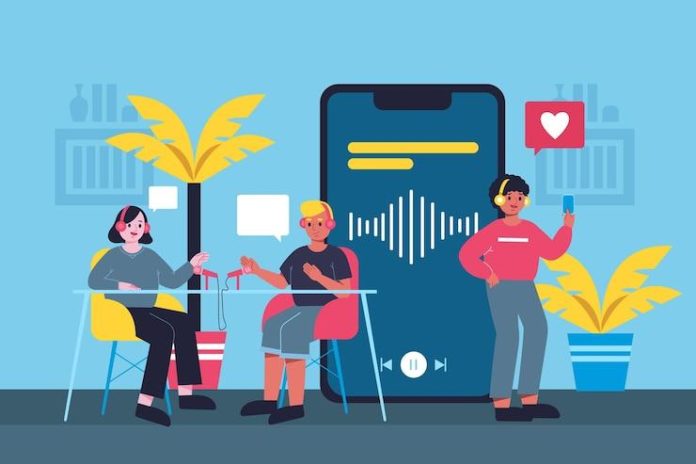
Remember when you used to playlist transfer files between your old iPod and laptop, feeling fully in charge of what played next? Those days felt personal and hands-on. Fast forward to now, and the story has changed. Streaming services like freeyourmusic, Spotify, and Apple Music promise many songs.
The sense of discovery has been replaced with a system that chooses for us. This shift isn’t just about comfort—it’s about control. Let’s look at how we went from music curators to passive listeners.
Music Curators to Background Listeners
Once, making playlists was an art. You’d pick songs based on mood, message, or memory. That process turned casual listeners into music curators. However, with the rise of streaming platforms, the control has slowly slipped from our hands. Now, algorithms track our clicks, skips, and time spent on each track to suggest what comes next. Spotify, for instance, uses over 35 data points to recommend tracks. That sounds helpful, but the result is often repetitive suggestions and fewer chances to hear something fresh.
Streaming services have grown into dominant music gatekeepers. In 2024, Spotify held over 31% of the global music streaming market, followed by Apple Music at 15%. While this sounds efficient, it has tilted the focus away from the users’ choices. Music curators have become background listeners in their playlists. These platforms push specific songs or artists based on business goals, trends, or agreements, less about what you want and more about what they want to promote.
Music Algorithm Control
Music algorithm control now decides what users listen to, more than they realize. When an algorithm detects your liking for soft rock, it might endlessly serve similar songs, even if you’re ready to explore other genres. That repetition locks your listening habits into a loop.
For example, the “Discover Weekly” playlist on Spotify is driven by your behavior and data from users with similar patterns. This system pushes you into a musical bubble. Finding new music or listening to whole albums becomes harder unless you manually search. This shift has changed music from an art form to a consumption loop aimed at maximizing engagement, not appreciation.
Music Curators Were Listeners First
Curating used to mean something. DJs, collectors, or passionate fans would create thoughtful playlists with unique combinations of genres and songs. Their selections told stories. Today’s streaming platforms reduce that creative role, putting users in the backseat.
Streaming platforms have also created a situation where users listen more but connect less. A recent study showed that 72% of Spotify users listen passively, meaning music plays in the background while doing something else. That’s a big difference from sitting with a record or attending a concert hall. What we now call “listening” is often sound filling the room.
Streaming Platforms
Streaming platforms instantly serve billions of songs to millions of users. That’s impressive, but it comes at a price—personality. Your playlists are no longer yours alone. They’re shaped with the help of the algorithm, which bases decisions on listening history, skips, mood tags, and even time of day.
Apple Music’s Radio Stations are a good example. These aren’t radio stations in the traditional sense, with a DJ sharing thoughts between tracks. Instead, they are algorithm-driven sound streams aiming to keep you on the app longer. The user’s taste is just one input among many. The final output is shaped more by the service than the listener.
Instant Gratification and the Fall of Deep Listening
Streaming has turned music into fast food. You get songs instantly, skip in seconds, and jump from track to track. This convenience creates a culture of instant gratification. The result? Listeners rarely finish full albums. Instead of enjoying an artist’s complete work, people often hear one popular song.
Data shows that only 23% of users on streaming services finish an entire album. Compare this to physical album listeners, where 68% listened from start to end. That’s a massive shift. Albums used to be a complete performance. Now, the system promotes singles, not stories.

What Changed for Music Curators?
- From effort to ease: Creating playlists used to take hours. Now it takes seconds.
- From stories to suggestions: Playlists no longer tell stories—they reflect algorithm results.
- From discovery to looping: You’re often shown similar songs, rarely new ones.
- From full albums to quick singles: Listening habits now prefer speed over depth.
- From fans to clients: Users became consumers, feeding streaming data rather than curating sounds.
Old vs. New Music Listening Culture
| Aspect | Before the Streaming Era | Now with Streaming Platforms |
|---|---|---|
| Playlist creation | Manual, thoughtful, user-driven | Instant, often algorithm-driven |
| Listening style | Active and intentional | Passive and background |
| Album completion rate | 68% (CDs, vinyl, etc.) | 23% (streaming services) |
| Music discovery | Radio shows, friends, record stores | Algorithm suggestions |
| Listener control | Full | Partial or limited |
| Curatorship | Personal effort and style | Mostly system-generated |
| Song depth appreciated | Lyrics, album art, theme | Title, hook, and skip-worthiness |
| Sound value | High-quality, owned formats | Compressed, temporary access |
Streaming’s Impact on the Music Industry
The music industry has shifted its goals to fit this new technology. Musicians no longer aim to create full albums. Instead, the focus is on repeatable, short-form songs that work well with algorithms. Streaming platforms often reward short songs, as more plays equal more income. A study showed that center stage songs are now 20% shorter on average compared to the 1990s. There’s the future!
This shift isn’t only about length elements—it’s also about how artists market themselves. Instead of promoting albums, they now push specific songs, often through short-form video or social media events. The connection with fans is less about the music and media presence. Each one needs to get involved and communicate to achieve better with the rest of the world.
Final Words
Streaming has made music easy to access but harder to control. Listeners on the internet became clients, curators lost their voice, and deep appreciation gave way to fast plays. It’s time to listen with purpose again.

